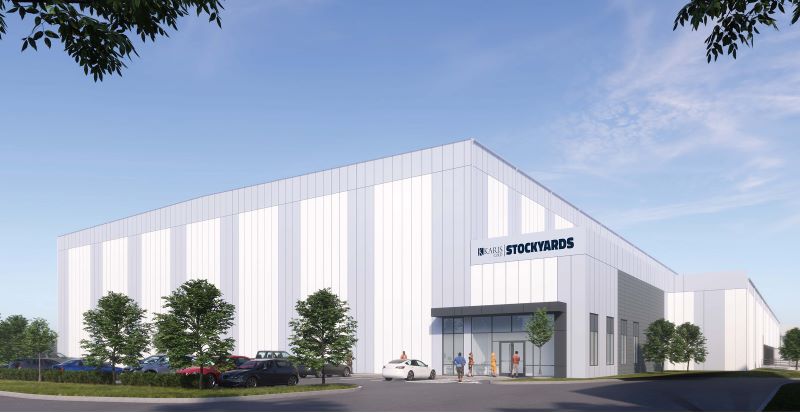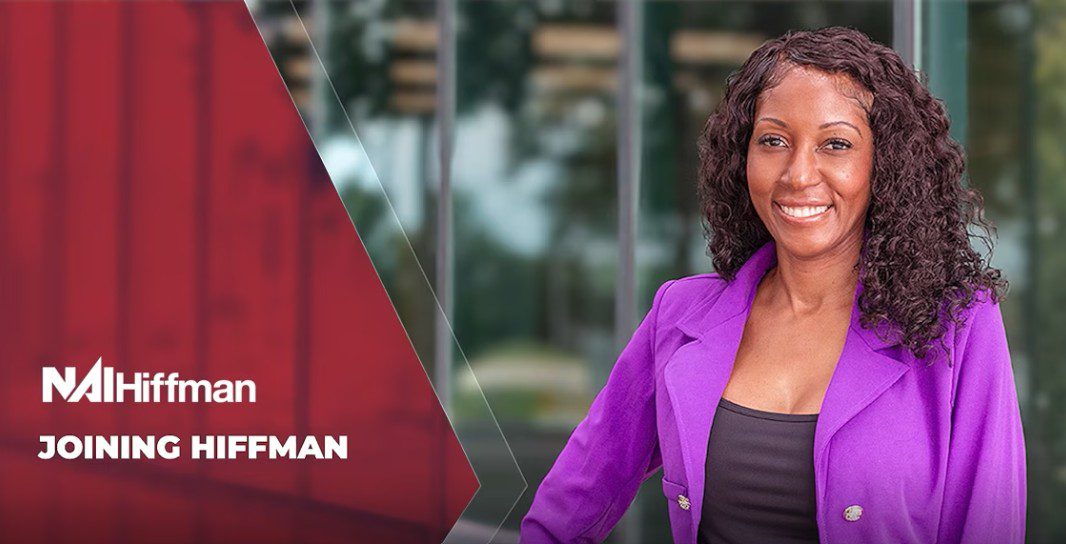June 2011
Adam Roth: Rail is the Future and Chicago is on the Right Track
As Reported by Mark Thomton in REjournals.com on May 25, 2011
Adam Roth has worked in the distribution and logistics industry from almost every angle imaginary. From working as a third-shift dock supervisor in a small Midwestern market while employed by a logistics company, to dealing with C-suite executives as a member of NAI Hiffman’s Industrial Services Group, he can honestly say that he has worked on both sides of the equation.
As the cost of fuel prices go, so does the industry. Roth works extensively at the CenterPoint Intermodal Center in Joliet and Elwood and he recently explained to Mark Thomton, editor of the Illinois Real Estate Journal, why rail is going to play an increasing role in distribution operations and why Chicago is perfectly situated to capitalize on it for the foreseeable future.
How did you get started in commercial real estate?
Before getting into commercial real estate I was in the logistics industry for just over 10 years. I was transferred to  Chicago while I was working at a 3PL. Two close friends of mine, unsolicited, mentioned that I would be good at real estate.
Chicago while I was working at a 3PL. Two close friends of mine, unsolicited, mentioned that I would be good at real estate.
Did they give you a reason?
I asked them why and they just said that it would be a good fit for me. It was unusual because in a three week span, two different people mentioned it to me. A couple months later I was looking at my career path and I thought that it might be the opportunity to make a change. Worst case scenario, if I failed miserably, I could go back to what I was doing before. One of the people I reached out to was Dan Leahy (of NAI Hiffman). We met and I realized in meeting with Dan that my learning curve would be faster based on my logistical background if I focused on industrial. Dan thought there was an opportunity for us to work together.
Was the learning curve for Real Estate steep?
A saying that I have heard and that was true for me is “the first year in commercial real estate takes two years.” That’s pretty accurate. Once I established relationships in real estate and entered into strategic conversations with companies, I realized that my background in logistics was much more beneficial than I anticipated.
How often do you work with the transportation providers directly?
I talk to the railroads almost every day. I talk to several trucking companies that work out of the CenterPoint Intermodal Center in Joliet as well. What I have found is that if we engage with a tenant that is strategic in nature, real estate is such a small part of the calculation. Transportation tends to be 8-10 times the cost of real estate. If we are engaged at a strategic level, our time is spent helping them solve their transportation problems and then real estate is eventually part of the conversation. Solving a client’s transportation issues far outweighs any discount we can find on the real estate side.
What are some of the transportation solutions that you talk to your clients about?
Clients want to know about conversion to intermodal. Historically, a lot of companies would bring their freight into the West coast, dray it, truck it to the Inland Empire, transload it in a facility, put it on 53-foot boxes and either truck it or intermodal it across the country. Now, we are having conversations with companies about taking their containers all the way inland if they have the density and the volume that can justify doing it. Conversations are not only about inbound freight, but how we can utilize that equipment and get it back out to the coast and back over to Asia. I also have conversations in regard to permit fees that reduce fees for heavyweight shipments. California has an 80,000 pound restriction on heavyweight loads for the roads, so now we are working with clients to get their freight all the way to the dock via rail. We can load heavyweight containers in Joliet/Elwood, put it on the rail, ship it across the country and the train goes right on the dock in California. It avoids the 80,000 pound restriction. If you can accomplish that as a heavyweight shipper, it is extremely efficient. These are just examples of conversations we typically have, but it is very different than just talking about what rates are for a 3-5 year lease.
How is activity at the intermodal center?
Activity has been good. The BNSF operation opened at the end of 2002 and the Union Pacific operation opened in August of last year. It is the largest inland port in North America. Within another year, the BNSF operation will become the largest in its network. It is absolutely the future of distribution and the supply chain in our country. It is extremely efficient and it is more energy efficient, which will become a larger issue in the coming years. It gets trucks off the road and freight off the highway, which is an issue with our infrastructure. Even in the downturn, the railroads have been spending a tremendous amount of capital on infrastructure improvements to prepare for this future capacity.
What will happen to distribution hubs that are not located near an intermodal center? If fuel costs become an issue, what will happen to the O’Hare market that relies on air freight?
I get asked that question on occasion. Rail will become a more integral part of pretty much everyone’s operations, as long as they have a large enough quantity to ship. Frequently, people will make broad statements about how distribution models will look in the future. I see statements about how everyone will be doing specific things with distribution, but the truth is it is very case specific. It depends on the specific company’s needs. One blanket statement I will make is that there will be a transition away from smaller parcel. When you think about distribution in general, the most efficient method is to ship in as big of bulk as you can. It is economies-of-scale 101. If you can ship by barge, it is very efficient. But not a lot of commodities can do that. If you can ship by box car, 3-5 truckloads make up one box car, then that is a very efficient cost per ton. Then you go to intermodal, then you go to truck driving, and as you get down in bulk weight, your cost goes up. It’s an inverse relationship. Air freight parcel is the highest cost. No matter what, there are going to be products that require that, but if you have the option, companies will train their clients and their customer base to deal with slower transit and a more cost effective mode of transportation. There is a tipping point for everything and fuel is the common denominator. I think we will see $300 a barrel by 2020. Once you get to a certain point on fuel, some of that manufacturing will come back to the states. 3PLs will continue to gain market share and there will continue to be a migration to rail and consolidation.
How is the current rail system in Chicago?
There are issues with the rail network and its age in Chicago, but it is improving. The intermodal center has been a huge success. It has greatly aided in the infrastructure of our rail system. People often state concerns about the competitive level of Illinois—and some of it is justifiable– when compared to other states, but there is no intermodal system like this anywhere else. One thing we have going for us that other states would love is our transportation network and our access to population. Even with all of our faults, that is why so many people still locate to Chicago in my opinion.
Will the widening of the Panama Canal have any effect on the Chicago market?
The expansion will be complete in 2014 and they are on schedule. Even Panama Canal officials don’t see this as a light switch where 25 percent of the freight will migrate from West Coast to East Coast. It will be a gradual migration. When you think about transportation, the most efficient thing is to keep it on the water in bulk size. When people can, they  will ship it all the way to the East Coast on the container vessel. There is still a large population base in the West Coast. People have been shipping to the East Coast from the Suez Canal for years, but the general opinion that I have seen is that it won’t be a big influx. People will migrate where they can and when it is cost effective.
will ship it all the way to the East Coast on the container vessel. There is still a large population base in the West Coast. People have been shipping to the East Coast from the Suez Canal for years, but the general opinion that I have seen is that it won’t be a big influx. People will migrate where they can and when it is cost effective.
Will other Midwestern cities attempt to establish intermodal centers to compete with Chicago?
Kansas City does have some new intermodal projects underway. The key with intermodals is that you have to have critical mass and density. There is enough freight volume on the west coast to create full train loads to travel intact all the way to Chicago. Now, with grain and other exports going out of Chicago, we are starting to get great volume heading back out west. Does a secondary or tertiary market have the density to do this? In my experience, most of the time, they do not. You have to have critical mass and density to make it work. Very few communities have it. Chicago does.
What have you seen in the industrial market in the last 12 months?
The industrial market has really picked up since November of 2010. Activity is much more real and transactions are getting done. There seems to be an underlying theme: tenants that have the opportunity to reassess their current lease situation are taking advantage of the market place. If they can, now is the time to take advantage of aggressive lease rates. I see that window in some corridors starting to close. I think we will see some speculative construction in 2012. I would not have thought that in the 3rd quarter of 2010.
What do you love about this business?
Strategizing with companies and making an impact beyond the lease rate.
What is something that people in your industry might not know about you?
For about four years I was in the operations portion of the logistics industry. I was working third shift as a front line supervisor on a dock. I had 50 union guys reporting to me. It was a wild experience. There were people working on the dock for longer than I had been alive. Working with them and seeing how different freights are handled was invaluable.
If you had to give a piece of advice to someone looking to get into logistical real estate, what would you say?
Learn the rail. The opportunities there will continue to grow. Also, learn your client’s business as much as you can. We like to think that we are the center of the world, but in the logistics industry, we are a very small part of the overall calculation.


